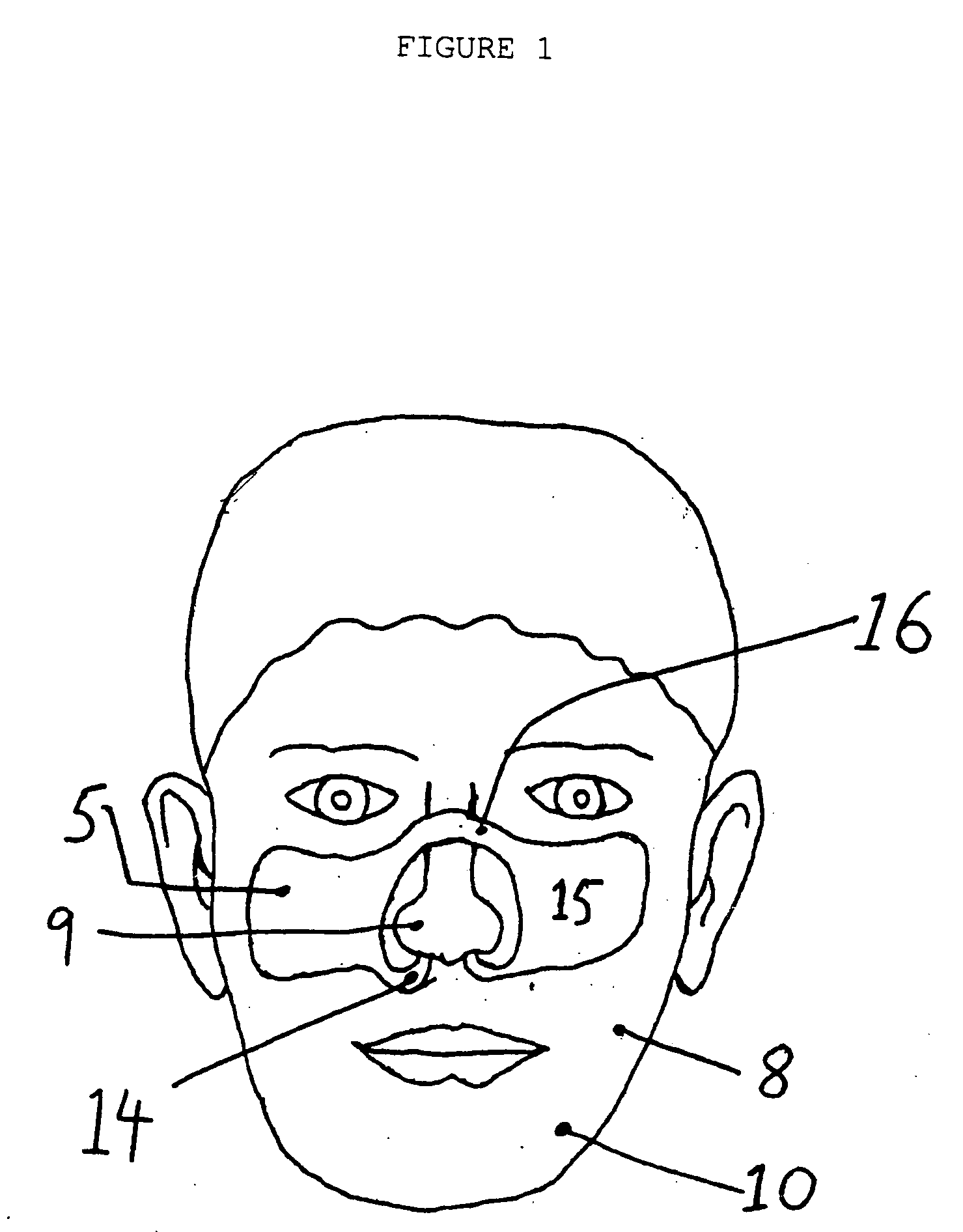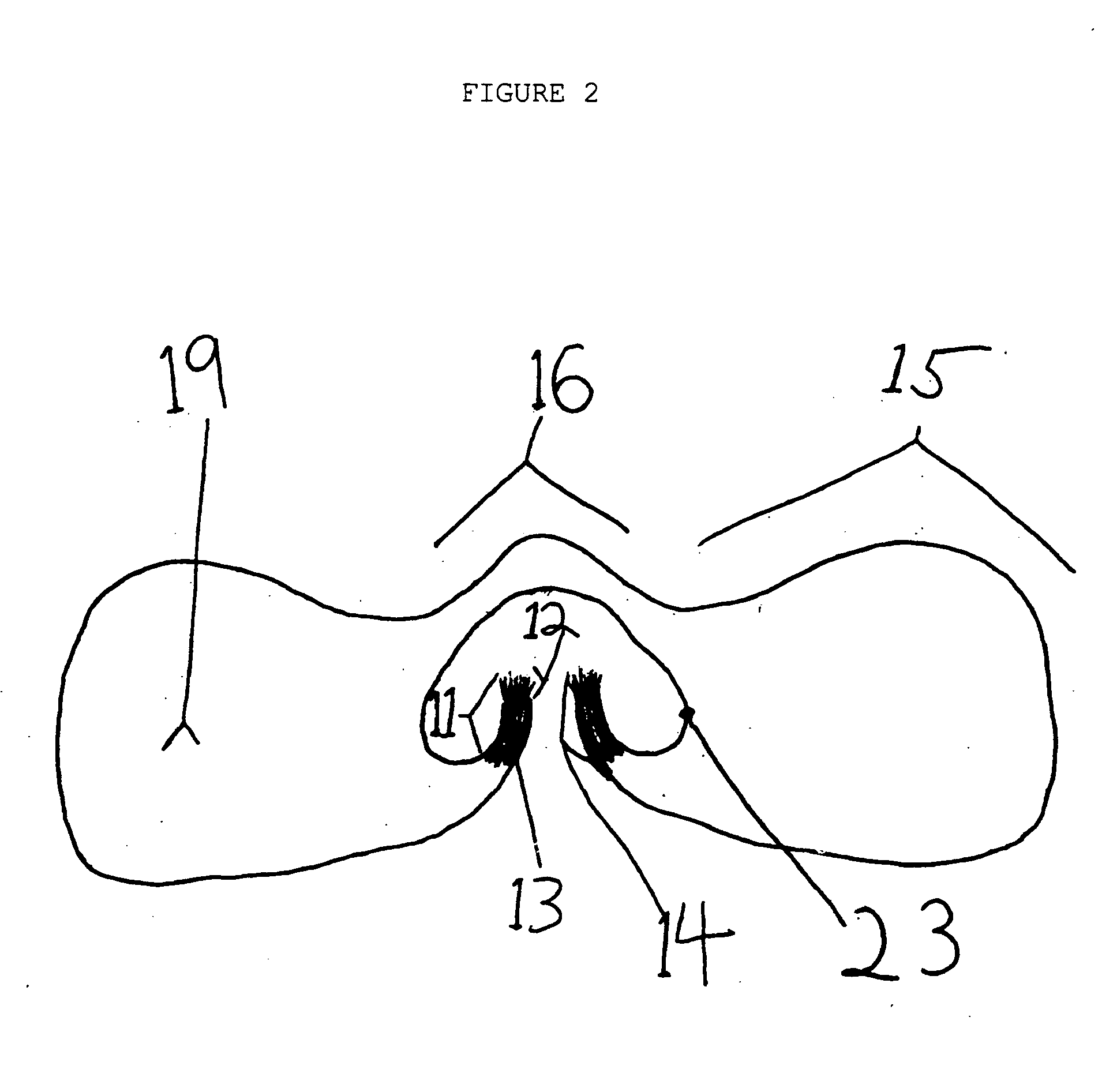Continuous nasal irrigation device
a nasal irrigation and continuous technology, applied in the field of nasal irrigation, can solve the problems of comoroid conditions, worsening symptoms, and becoming more difficult to clear, and achieve the effect of minimizing symptoms, keeping the nose and other airways open and less uncomfortabl
- Summary
- Abstract
- Description
- Claims
- Application Information
AI Technical Summary
Benefits of technology
Problems solved by technology
Method used
Image
Examples
Embodiment Construction
[0032] A nasal irrigation device 5 in accordance with the present invention is illustrated in situ in FIG. 1. Of note is the symmetrical positioning on the face 8 of a patient 10, which is defined as a wearer of said device 5. A cheek section 15 overlies each cheek and acts as a reservoir for fluid 17 (FIG. 5). Each cheek section 15 is lumenally continuous with one another through a nose bridge section 16. Each cheek section 15 also projects distally and medially to form a nostril section 14, which as its name implies, inserts into the distal part of the ipsilateral nostril 9 when a device 5 is being worn by a patient 10.
[0033] A frontal view of a device 5 is shown in FIG. 2. Each nostril section 14 includes a wick 11. The retained wick 13 portion is roughly cylindrical in shape and is bordered and frictionally retained by a front flexible plastic wall 19, a back flexible plastic wall 20 (FIG. 5) and their connecting heat welded watertight outer seam 18 and inner seam 23. An expose...
PUM
 Login to View More
Login to View More Abstract
Description
Claims
Application Information
 Login to View More
Login to View More - R&D
- Intellectual Property
- Life Sciences
- Materials
- Tech Scout
- Unparalleled Data Quality
- Higher Quality Content
- 60% Fewer Hallucinations
Browse by: Latest US Patents, China's latest patents, Technical Efficacy Thesaurus, Application Domain, Technology Topic, Popular Technical Reports.
© 2025 PatSnap. All rights reserved.Legal|Privacy policy|Modern Slavery Act Transparency Statement|Sitemap|About US| Contact US: help@patsnap.com



